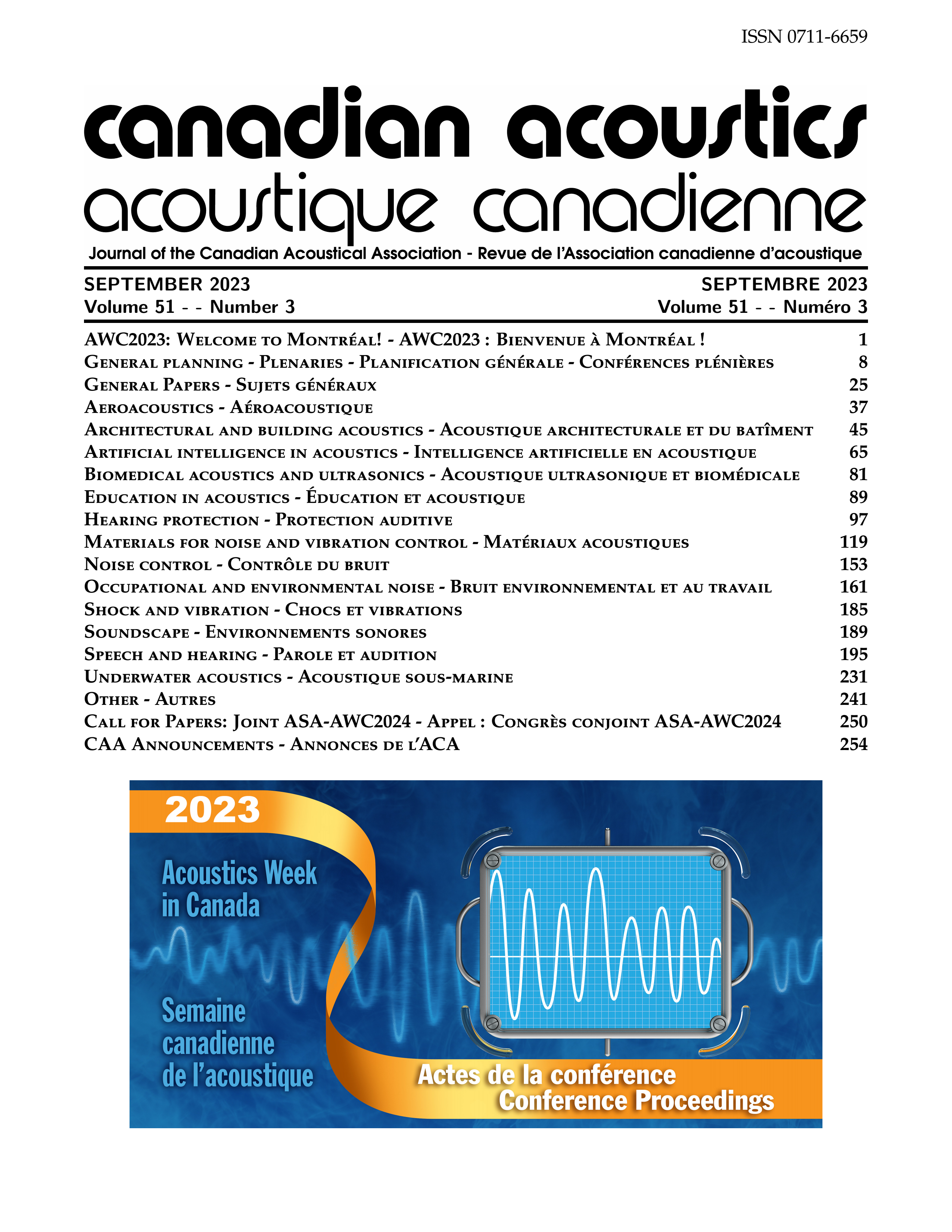Lessons Learned Monitoring Near and Further From Wind Turbines
Abstract
Without wind to turn them, wind turbines are almost a silent neighbour. Yet, when rotating, we ask if what we hear is the wind, the impact of wind on surroundings, or on the turbines. Hypotheses have been advanced why some people say they are annoyed by wind turbines. These hypotheses leave unresolved questions why the annoyance is not present at all times.A 135-day monitoring program was carried out at a site 537 metres from the nearest wind turbine, with 19 turbines within 3 km. Simultaneous monitoring was conducted over 14-days at a second site 6 km from the nearest wind turbine in the same array.Measurement microphone results at the different sites were compared to a Level 1 ACO Pacific 7146 microphone to ensure consistency.Analysis of microphone recordings near wind turbines showed a correlation between the results and conditions identified as annoying by residents. The correlation was not to maximum sound amplitude.Annoyance was most identified when the difference (LZ10 - LZ90) was ≥ 6 dB and the difference (LA10 - LA90) was ≤ 3 dB.At these times, sound from the wind turbines were prominent, and dominated noise from the wind, or the wind on the surroundings.These conditions were not found to occur at the site distant from wind turbines.Special attention was given to situations when the turbines shut down or started up, as wind speeds do not change appreciably over the transition itself. Similar results were found at other sites near wind turbines.Concluding, the monitoring program identified acoustic conditions consistent with times identified as annoying occurring near wind turbines, that did not exist further from wind turbines. This will be useful as a screening tool to identify when annoyance might occur.Additional Files
Published
How to Cite
Issue
Section
License
Author Licensing Addendum
This Licensing Addendum ("Addendum") is entered into between the undersigned Author(s) and Canadian Acoustics journal published by the Canadian Acoustical Association (hereinafter referred to as the "Publisher"). The Author(s) and the Publisher agree as follows:
-
Retained Rights: The Author(s) retain(s) the following rights:
- The right to reproduce, distribute, and publicly display the Work on the Author's personal website or the website of the Author's institution.
- The right to use the Work in the Author's teaching activities and presentations.
- The right to include the Work in a compilation for the Author's personal use, not for sale.
-
Grant of License: The Author(s) grant(s) to the Publisher a worldwide exclusive license to publish, reproduce, distribute, and display the Work in Canadian Acoustics and any other formats and media deemed appropriate by the Publisher.
-
Attribution: The Publisher agrees to include proper attribution to the Author(s) in all publications and reproductions of the Work.
-
No Conflict: This Addendum is intended to be in harmony with, and not in conflict with, the terms and conditions of the original agreement entered into between the Author(s) and the Publisher.
-
Copyright Clause: Copyright on articles is held by the Author(s). The corresponding Author has the right to grant on behalf of all Authors and does grant on behalf of all Authors, a worldwide exclusive license to the Publisher and its licensees in perpetuity, in all forms, formats, and media (whether known now or created in the future), including but not limited to the rights to publish, reproduce, distribute, display, store, translate, create adaptations, reprints, include within collections, and create summaries, extracts, and/or abstracts of the Contribution.


